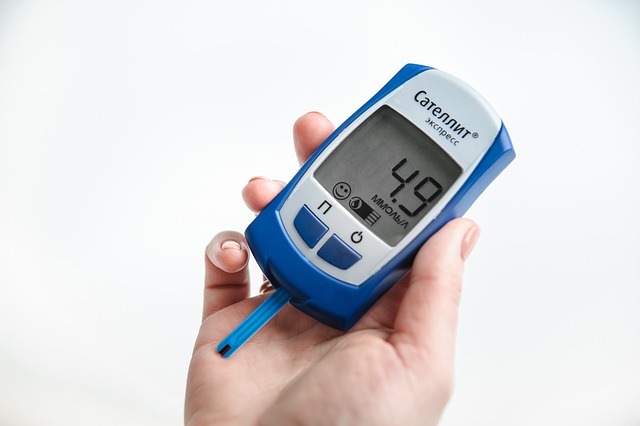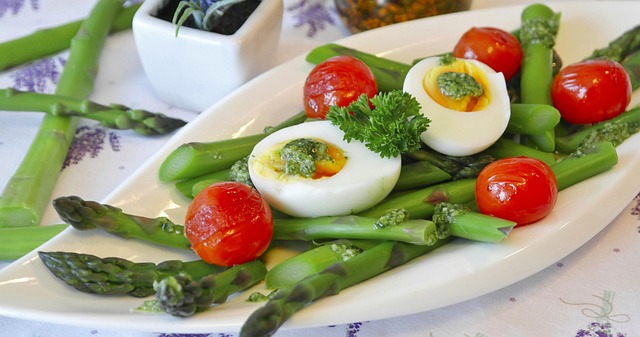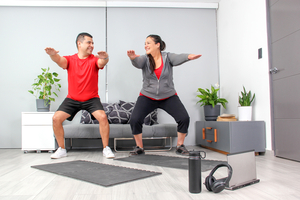What you eat has one of the biggest influences on your health. Working towards a healthy weight and making nutritious choices can help you feel lower blood sugar and control type 2 diabetes.
Though sometimes the "right" choices for your health may not, at first glance, be the quickest to prepare or the tastiest, Lark for Diabetes may be quick to point out that there are ways to make these good choices the easy and attractive ones. Here are some tips for getting more of the best foods for weight loss and health, and how you can learn to enjoy them even more.
Making Healthy Foods the Default Option
Can you think back to a recent time when you may have chosen a less-healthy option, for example, chips or cookies for a snack, or macaroni and cheese from the pantry or a burger and fries from the drive-through? What led to that choice?
It could have been that you really wanted that exact food, but there may have been another factor: convenience. Think back again to that less-healthy choice. How easy was it to get? Chances are, it was quite easy. The cookies may have been on the counter or at the front of the pantry, the chips may have been in the vending machine, the mac and cheese may have been the quickest at-home dinner option, and a burger and fries may have been a few minutes away from work.
Making healthy choices more readily available than the less-healthy ones can turn your diet around. What would happen if you walked into the kitchen for a snack and the first items you saw were fresh fruit on the counter, hard-boiled eggs and baby carrots when you opened the fridge, and nuts and unsweetened shredded wheat when you opened the pantry? Or what if all you had to do was heat up some chicken chili when you got home from work, or open your lunch bag to enjoy a tuna sandwich with lettuce and tomato on whole-wheat? Chances are, you would wind up with a healthier snack or meal than mac and cheese or cookies. The point is to put healthy foods within reach.
Get More Pleasure from Healthy Foods
Eating is about pleasure, too, especially when we are talking about a long-term lifestyle and not a short-term crash diet. There are plenty of ways to learn to love healthy foods even more than you might already.
- Try a few times. It can take several tries to acquire a taste for certain foods, so give yourself several chances. Just like a parent might offer a new food 15 or 20 times to a toddler before she will accept it, you may need to taste a new food 15 or 20 times before you develop a liking for it.
- Get it ready. When your next healthy food is ready to be eaten, it is more likely to find its way to your mouth than if you start to scrounge around after you get hungry. That can mean making breakfast the night before, packing a healthy lunch instead of going out to eat, freezing casseroles and other healthy dishes on the weekends and thawing them in the fridge so that they are ready to be heated for dinner after you get home from work, and always having a variety of healthy snacks, such as fresh fruit and vegetables, yogurt, nuts, and hard-boiled eggs, ready to go.
- Make small substitutions or additions. It can be unpalatable to overhaul your diet in one fell swoop, but nearly unnoticeable to make small changes. For example, by substituting half the flour for whole-grain flour, cutting the sugar by one-third, and using half yogurt and half oil instead of butter in baking recipes, calories and fat will be cut while fiber and whole grains will increase.
- Make it positive. Thinking about what you can add to your diet instead of thinking about what you cannot have makes it more exciting, and less of a chore. For example, why not get excited about parmesan and pecan-crusted tilapia followed by a frozen banana dipped in dark chocolate, and not get upset about skipping fried fish sticks and chocolate ice cream? Similarly, it can be fun to try new vegetables, add more fruit dishes for dessert, and use herbs and spices to make lean proteins flavorful.
- Know the goals. If you do not know what "healthy" is, it will be hard to make healthy choices and prepare them ahead of time. Generally, lean proteins and vegetables are always good choices since they are low in carbs and calories and are filling. Whole grains, fruit, beans, and nuts are also great choices for lowering blood sugar as long as the serving size stays small. Healthy fats in moderation can also help with weight control and blood sugar.
- Change the proportions. There is no need to cut out all low-nutrient foods all at once. Having less of them, while having more higher-nutrient foods, can make a big difference. For example, taking smaller portions of stuffing and potatoes, while having more turkey and roasted green beans, or having half as much granola and twice as much fresh fruit, both cut calories and increase fiber and other nutrients.
Healthy Choices All Day
How can you put those good intentions in play? These are some suggestions for healthier alternatives all day. Generally, the alternatives are lower in calories, higher in protein and fiber, and lower in sugar, refined starch, and/or unhealthy fats.
Breakfast
Lunch
Dinner
Snacks and Desserts
It may take some effort in the beginning to get those healthy foods prepared, to gain a taste for them, and to make sure they are more readily available than higher-calorie, less-nutritious fare, but help is available. Lark for Diabetes is there for reminders, educational chats and insights, food logging, and more as you build healthy habits that can last a lifetime as you lose weight and lower blood sugar.











.webp)






